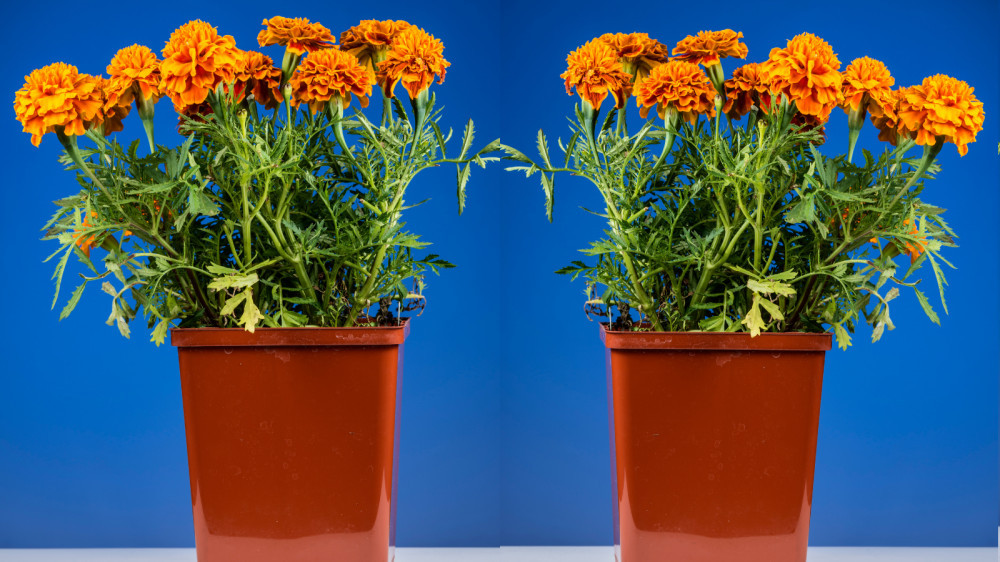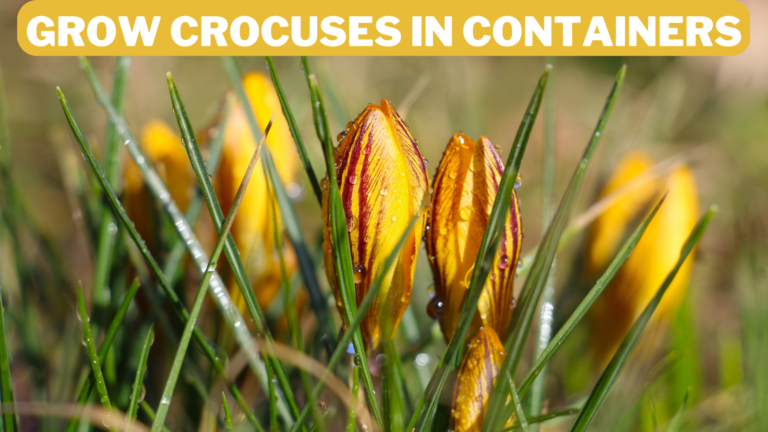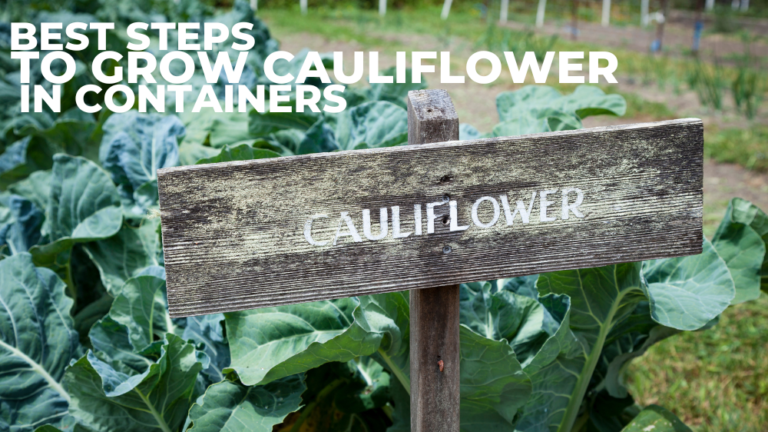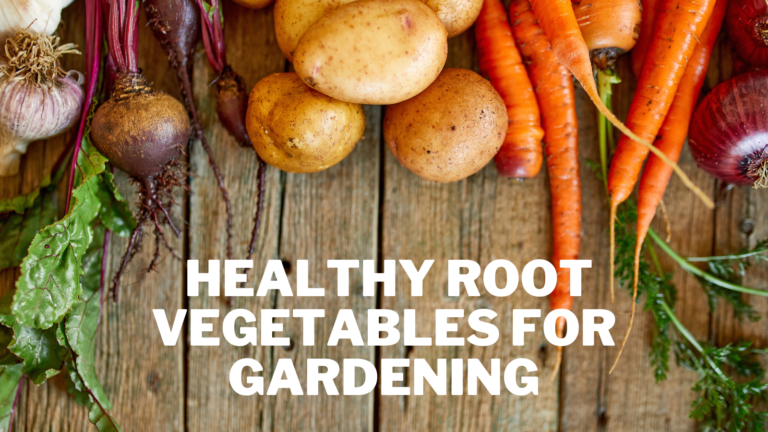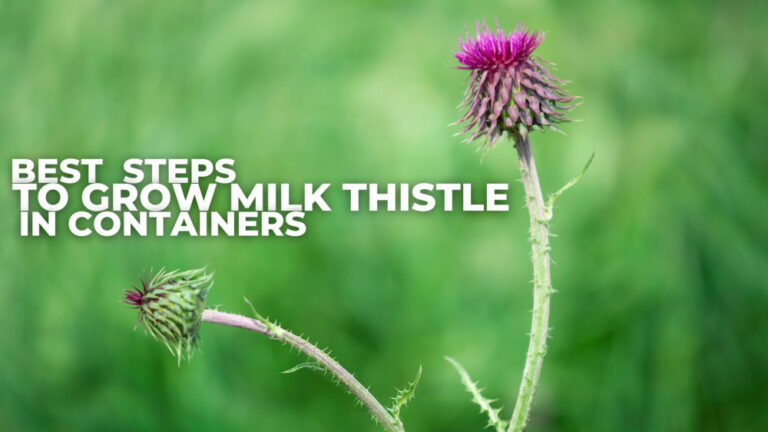Easy Steps To Grow Marigolds In A Container
Easy Steps To Grow Marigolds In A Container
Marigolds are tolerant plants that reliably bloom even under harsh conditions, including direct sunlight, scorching heat, and ordinary to poor soil. Growing marigolds in containers is a surefire way to enjoy this charming plant, even if they are gorgeous in the ground. Learn how to cultivate marigolds in a container by continuing to read.
Origin & History Of Marigolds
Marigolds, a New World native and one of the sacred flowers of the Aztecs, travelled 3,000 miles north from their origin by crossing the Atlantic Ocean twice.
The challenging voyage is evidence of the marigolds' tenacious toughness. One of the most common annuals produced in North American gardens nowadays is the marigold.
The Aztecs were the first to employ marigolds, and they believed that they had magical, spiritual, and therapeutic characteristics.
The De La Crus-Badiano Aztec Herbal from 1552 has the earliest reference to the use of marigolds.
According to the Herbal, marigolds can be used to treat hiccups, lightning strikes, or “for one who wishes to cross a river or stream safely.” The most recent use supports the claimed magical abilities.
Hindu religious rituals also employ marigolds. According to a report, marigolds were used as garlands to adorn local gods during the harvest celebration.
The tourist who remembered the festivities also remarked that the marigold's precise orange-yellow hue was shared by corn and peppers.
It appeared that the peppers and maize were developed or selected to have the same colour as marigold flowers.
Marigolds were introduced to American gardeners several hundred years after being brought from the Americas to Europe and Africa.
It wasn't until soon after the Revolutionary War that this sort of reunion took place. One of the many plants transported to the fledgling nation was marigolds.
Marigold breeding has produced hundreds of new kinds since the 1920s. Breeding improvements include odourless marigolds, white marigolds, hybrids, and triploids.
The marigold's breeding emphasis and popularity returning to the Americas, where it originated, seems appropriate.
One of the simplest plants to raise from seed is the marigold. After the risk of frost has gone, seed can be planted outside and covered with ¼ inch of soil. Since the soil is warm (between 60 and 70 degrees), germination will occur in 7–10 days.
Except for African Marigolds, the seedlings should be pruned to 4-6 inches. By the end of June, the plants will start to bloom and continue until a deadly frost.
You will get increased flowering results from deadheading. Although plants are adaptable and thrive in various soil types, they need full sun.
Types Of Marigold
The different marigold varieties are adaptable Mediterranean flowers that have traversed the globe and thrived in various growth environments.
Its flexibility makes it one of the most prevalent plants in most gardens. You should know the best variety for your garden to grow marigolds in a container.
1. Bonanza Marigold
A bushy dwarf cultivar from the family of French marigolds is called Bonanza. After the springtime frost has melted, they are grown from seeds.
Both in containers on a patio or porch and in outdoor garden beds, they can be grown. Their flowers are rust-red with golden margins.
They begin to bloom in the late spring and continue through the summer and into the fall.
They enjoy receiving full sun. They may grow in various soil types, but loamy, sandy, or clayey moist but well-draining soil is where they thrive.
2. Little Hero Marigold
The small French marigold variety is known as “Little Hero” barely reaches a height of about eight inches.
This type can survive in hot, humid weather. Two-inch double-layered blooms with various colours, including gold, flame, red, yellow, and orange, make them distinctive.
3. Bounty Marigold
Bounty marigold is a French marigold cultivar that grows to around 10 to 12 inches. Even at full maturity, this dwarf cultivar remains relatively tiny.
This plant thrives in the sweltering summer humidity. Only the tops of the plants yield flowers. The two-inch broad flowers have orange, flaming, and gold colouring.
4. Hero Orange Marigold
French Marigold Hero Orange is another name for Tagetes patula, popularly known as the “Hero Orange.”
It is a type of dwarf French marigold. The plant matures at a height of around 25 cm.
The double-layered orange blossom, which may grow up to 6 cm wide in full bloom, makes this plant unique. That is a marigold type that is on the larger side.
Summer and fall are the flowering seasons for this shrub. It thrives in direct sunlight and prefers moist, well-draining soil. Numerous soil types, including sandy, clayey, and loamy, are well adapted.
5. Queen Sophia Marigold
Queen Sophia is another dwarf variant of the French marigold. Since this plant is deciduous and loses its leaves seasonally, you must prune it back after the flowering period.
This marigold cultivar has semi-double flowers that resemble carnations. It features flowers with petals that are reddish-orange with yellow margins. These and all other varieties of marigolds are tick-repelling plants!
6. Safari Scarlet Marigold
Another dwarf French marigold is the Safari Scarlet. It features semi-double flowers with yellow tips and an exquisite rich mahogany-orange colour. After the flowering season, these plants must be pruned back because they also shed occasionally.
7. Safari Tangerine Marigold
It's a safari. A miniature form of the French marigold family is called tangerine. Its aromatic foliage and bright tangerine orange blossoms, which resemble carnations, set it apart from other plants.
They bloom in the spring, summer, and fall. They thrive in whole light and moist, well-draining soil. To extend flowering, you must deadhead the plant periodically.
8. Yellow Jacket Marigold
The dwarf French marigold cultivar Tagetes patula ‘Yellow Jacket' is compact and bushy. It has a protracted flowering period from spring until October.
They are distinguished by their dense, double-crested, bright yellow flowers and grey-green, intensely scented foliage.
You can grow marigolds indoors in pots or containers if spiders terrify you because they are a plant that repels them.
9. Safari Mixture Marigold
The Safari Blend, The family of French marigolds, includes the flowering plant known as the marigold, or Tagetes patula, which has a potent scent. Semi-double flowers that resemble carnations are its defining feature.
These plants produce flowers that are mahogany-red, orange, and yellow. I adore these marigold varieties since you can choose from various colours, and they all require the same upkeep, making your flower garden much simpler to manage.
10. Signet Marigold
Small, bushy Signet marigolds have lacy, lemon-scented leaves. Small, solitary, fragile flowers with hues like yellow, orange, or rust red are what set them apart.
They yield tarragon-flavoured, hot edible blooms. There are toxic flowers, so don't just eat flowers at random.
Growing Marigold In A Container
Container To Grow Marigolds In a Container
These plants don't require a lot of areas to survive because their roots aren't extremely deep or widely dispersed.
However, a plant with constrained roots won't develop to its full potential. The container size will depend on how big a plant you're growing.
Unless you're producing a dwarf cultivar, a tiny French variety (T. patula) will require much less space than a huge Mexican marigold (T. erecta).
Of course, if you want to grow multiple plants together, you'll also need a larger container.
One French specimen or a pot marigold (Calendula officinalis) should do well in a six-inch container. An additional six inches of space should be allocated for each subsequent plant.
An African or Mexican marigold typically requires a minimum of a 12-inch pot and an additional 12 inches for each additional plant.
In contrast to other plant types, the material of the container is not always as crucial. Whether made of glazed clay, terra cotta, cement, plastic, or wood, these flowers appear content.
Although Tagetes plants don't care what kind of pot you use for them, drainage is one area where you shouldn't cut corners.
Indeed, your pot needs to have at least one drainage hole. Two or three holes are preferable if the planter has a diameter greater than 12 inches.
Collecting Marigold Seeds
Using pruning shears or scissors, clip the dead seed heads from the marigold plants and collect them.
The seed heads should be spread out on a drying tray, and placed in a shaded area with sufficient airflow.
Before extracting the seeds, let the seed heads thoroughly dry. It can take from seven to ten days to complete.
Place the seed heads on a level work surface after being removed from the frying pan. Hold the seed heads' dried petals firmly in one hand and the bottom in the other.
The seeds are the bits that resemble little black carrots when the petals are removed from the dried container. Distinguish the seeds from the other floral components.
Germination Seeds To Grow Marigolds In A Container
Marigold seeds are planted by moistening the medium thoroughly, scattering the seeds over the surface, covering the seeds with a thin layer of medium, and then softly wetting the surface.
Until the marigold seeds sprout, the germination media should stay equally moist but not wet. Germination is aided by keeping the medium and container around 70°F and in bright but indirect sunlight. Within 5 to 10 days, marigold seed germination will take place.
Soil Requirements
Ensure the soil is prepared beforehand because the foxglove requires soil rich in humus. Check the requirements of the plants you have chosen to go with the foxglove. They don't have a lot of requirements for the soil, but well-drained soil will do.
They are the most minor selective plants in your garden because they don't require rich, organic soil. Use a lightweight, high-quality potting mix. Improve drainage by adding some sand, perlite, or vermiculite.
Put the pot in a location where the marigolds will receive at least six hours of direct sunlight. until the marigolds' top 1 to 2 inches are dry (2.5 to 5 cm.)
All soil types, except thick clay, are suitable for growing marigolds. Although they may adapt to slightly alkaline soils outside this range, they prefer a slightly acidic soil pH between 6.2 and 7.
Although fertile loam is preferable for the fastest development and most abundant flowering, moderately fertile soils are also appropriate.
Watering To Grow Marigolds In A Container
Marigolds planted in containers need to be watered often. Let the water run out of the container's drainage holes and wait until the soil has dried completely before watering it again. Never mist the blooms or leaves with water. They will rot easily.
Water the plants in the morning so they have all day to absorb it and have time to dry out at night.
Put the pot in a location where the marigolds will receive at least six hours of direct sunlight. Water the marigold when the soil's top 1 to 2 inches (2.5 to 5 cm) is dry. Once the earth has dried, deeply water it once again.
For the first week or so after planting, marigolds require moist soil to develop a sturdy root system. Once established, they need watering about once a week, more frequently during the hot summer months.
Overwatering marigolds might result in root rot. Marigolds that are overwatered may develop fungi.
Additional indicators of excessive irrigation include wilting and drooping. To prevent these issues, always let the soil dry out between waterings.
Sunlight Requirements
Marigolds enjoy being in the sun. They can be grown in full sun, but they can thrive in some shade.
They could rot and die if they are in wet, damp circumstances. Full sun and somewhat fertile, well-drained soil are requirements for marigolds.
While taller or larger-flowered marigolds can be planted in large pots or borders, smaller marigolds make wonderful edging plants for borders and thrive in containers.
Full sun to partial shade is ideal for marigolds. Marigolds can endure dry weather but prefer fertile, loose, loamy soil with good drainage.
Space
Directly sow seeds in the garden one inch apart or sow seeds in seed trays to transplant once the root system has taken hold.
Marigolds grow easily and quickly if planted. The majority tolerate hot, sunny exposures and flourish in direct sunlight.
Marigolds can withstand even the heat and light reflected from paved surfaces as long as they receive consistent hydration.
However, if there is intense sunshine for the remainder of the day, marigolds will withstand up to 20% shade.
Fertilizing
Marigolds don't require much care, but they will benefit from a small dose of an NPK 5-10-5 fertilizer and an organic amendment when planted.
If you notice evidence that they are nutritionally deficient, only fertilize extra before flowering.
By rigorously following the product instructions, avoid overfertilizing. With a few rare exceptions, most plants benefit from a fertilizer applied at the proper time and in the proper amount.
After all, that is what it is intended for. The fertilizers provide the soil with vital nutrients for plant health. The three categories of nutrients are macronutrients, secondary nutrients, and micronutrients.
All nutrients are equally crucial and necessary for plant health; they are only divided into various groups because plants need different amounts of each nutrient.
By fertilizing your plants, You can ensure they have all the nutrients they need to be healthy and thrive.
Knowing the components of fertilizer can help you determine the kind you need, why some types of fertilizers are better for particular plants than others, and when to apply fertilizer to your plants.
Insects & Diseases Of Marigolds
Marigold plants have few disease and pest issues if properly grown. Sometimes, dingy blotches and a layer of mildew on the leaves caused by pest insects or wet soil can result in one of the numerous fungal illnesses.
Weeds should be kept to a minimum, and Marigolds should be planted where there is sufficient drainage.
Marigold plants may get infected by mites and aphids. The disease problem can typically be resolved with a spray of water or insecticidal soap, applied once every other day for a week or two.
Harvesting Marigold
Marigold flowers should be picked during excellent hours of the day once they have reached their maximum size.
Before picking, the field must be watered so that the flowers retain well for a long time after harvest.
Plucked Polythene bags or bamboo baskets are used to collect marigold flowers before being sent to marketplaces.
Gather calendula blossoms early in the morning after the dew has dried. When flowers are fully opened, pick them up.
To dry the blooms, the cut flower heads should be put out on a screen in a dry, shady area. When they are paper-dry, turn them occasionally, then store them in canning jars until you're ready to use them.
It's essential to wait until the ideal moment to gather marigold seeds. When the petals are dry, and the base of each bloom (the seed pod) is starting to turn brown, make a plan to harvest the seeds. Simply detach each marigold flower head from its stem to harvest.
Conclusion
Growing marigolds is a lot of fun and quite simple. The information mentioned here may help grow marigolds in containers, poly houses, backyards, balconies, and terraces.
I trust you enjoyed this article on the Easy Steps To Grow Marigolds In A Container. Please stay tuned for more blog posts to come shortly. Take care!
JeannetteZ
>>>Please click here to read my all-inclusive article about Container Gardening<<<
>>>Are you interested in homegrown herbs and medicine? Please click here to find out more about it!<<<
Your Opinion Is Important To Me
Thoughts? Ideas? Questions? I would love to hear from you. Please leave me your questions, experience, and remarks about this article on the Easy Steps To Grow Marigolds In A Container, in the comments section below. You can also reach me by email at Jeannette@Close-To-Nature.org.
Disclosure
This post may contain affiliate links. As an Amazon Associate and other affiliate programs, I earn from qualifying purchases at no extra cost to you. Read my full affiliate disclosure.
You might also enjoy these blog posts:
Easy Steps To Grow Ashwagandha In A Container
Easy Steps To Grow Ginger In A Container
Must-Have Products For Dog Owners
20 Essential Cleaning Tips For Every Pet Owner

